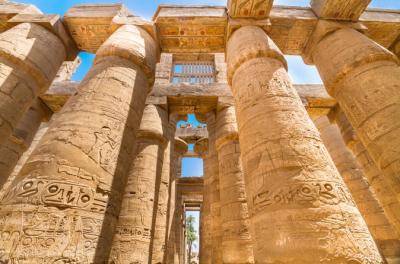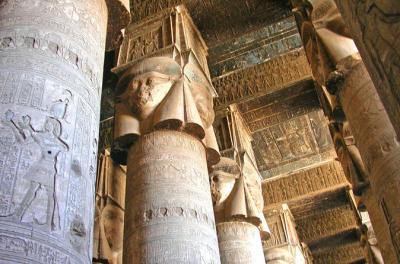Information / History & Culture
The Luxor History And Culture
Luxor is a city with a strong historical background. Like all other Egyptian cities, Luxor is rich in history and culture. This city has been under the rule of numerous pharaohs and all the contributions made by them have given Luxor the status it has today in the world. It has always been a power center even in ancient Egypt. Different pharaohs came in the rule and established gigantic monuments and tombs for their families. All the historic sites have been well preserved for the world to see. There are different phases of Luxor history.
Phase 1: 11th Dynasty (2055–1650 BC)
This city was known as Thebes in this time and in the ancient time was known as Waset. During the 11th dynasty, Thebes became a very important center for the kingdom. The upper and lower Egypt were merged together and reunited and Thebes was established at the capital of the Egypt region. This was under the rule of Montuhotep II. The Karnak temple was built for the love of Amon, a local god of that time.
Phase 2: 12th Dynasty and the Richest Period (1985–1795 BC)
The pharaohs of the 12th dynasty developed the city phenomenally and it was during these 200 years that Thebes, modern Luxor, became the richest city in Egypt. Most of the wealth earned from foreign trade and agriculture was sent to Thebes, even though it was not the capital of Egypt. The architecture and art were significantly developed and it was the golden age for the city.
Phase 3: Era of New Kingdom (1550–1069 BC)
Asiatic Hyksos were driven out and Ahmose I, Thebian ruler, came into power after the Second Intermediate Period. He was the founder of the 18th Dynasty and under him, Egypt achieved numerous military victories and that is why even after his death, Ahmose I was respected for a very long time and worshipped in the city for many years. From 1550–1069 BC it was the era of New Kingdom, the Thebes was at its highest peak. Thousands of people lived there, which together contributed to making amazing monuments in the city. Amenhotep III was one of the most famous rulers during these years who made additions in the Karnak temple and constructed the Malqata palace on the west bank, also in his time the largest memorial temple was built. Colossi of Memnon, the most enormous monolithic statue still remains, the rest is nothing but ruins. He was succeeded by his son, Amenhotep IV, who brought significant changes in art and architecture and also moved the capital from Thebes to Akhetaten.
Phase 4: Tutankhamun and Ramses II
Tutankhamun was not a very well-known ruler but he became the greatest pharaohs ever to be known after the year 1922 when his tomb was explored and a huge amount of treasure was found. Ramses II, on the other hand, was not much of a military winner but he was a phenomenal builder. Hypostyle hall was added in the Karnak temple and significant additions were made in the Luxor temple. He also built Ramesseum and other major tombs on the west bank.
Phase 5: Decline of Pharaonic rule
Persians begin to settle in the city and it was evident that the pharaonic rule was about to end. All the temples were now filled with mud-brick houses, churches were built in the temples by the Christians and the walls of the temples were carved with crosses all around. By the 7th Century AD, after Arab invasion the area became obscure and the only Arab remains were the name of the city, due to which the city was given the name Luxor. At the time Europeans step foot in the rea, this city was nothing more than a small village just known as Abu Al Haggag’s, saint from 12th-century, burial place.
Phase 6: Growth of Egyptomania
The city began to change when Napoleon entered the city. At the end of the 18th century, Napoleon came to restore Egypt’s lost respect and position. Description de l’Egypte was published and it was enough to make Egypt stand in the same grandeur as in at the pharaonic rule. Exhibitions were held that showcased the artifacts from ancient Egypt. This was the start of tourism in the city. By the year 1869, this city became the most visited tourist destination in the world.
The Luxor Culture
Luxor is known as the world’s largest open-air museum as it is home to some of the greatest historical monuments. The Luxor culture is rich and influenced by the long pharaonic rule. The jewelry arts and architecture is the same as that used to be in ancient times. The historical monuments are well-preserved and so is the culture of this city.
Featured Tours In Luxor

Private Tour: Luxor East Bank, Karnak and Luxor Temples
$56.23 ^
per person

Private Tour: Dendara and Abydos
$76.07 ^
per person

Private Tour: Dendara from Luxor
$36.38 ^
per person

Luxor Airport Private Arrival Transfer
$8.4 ^
per person

Luxor Airport Private Departure Transfer
$8.4 ^
per person

